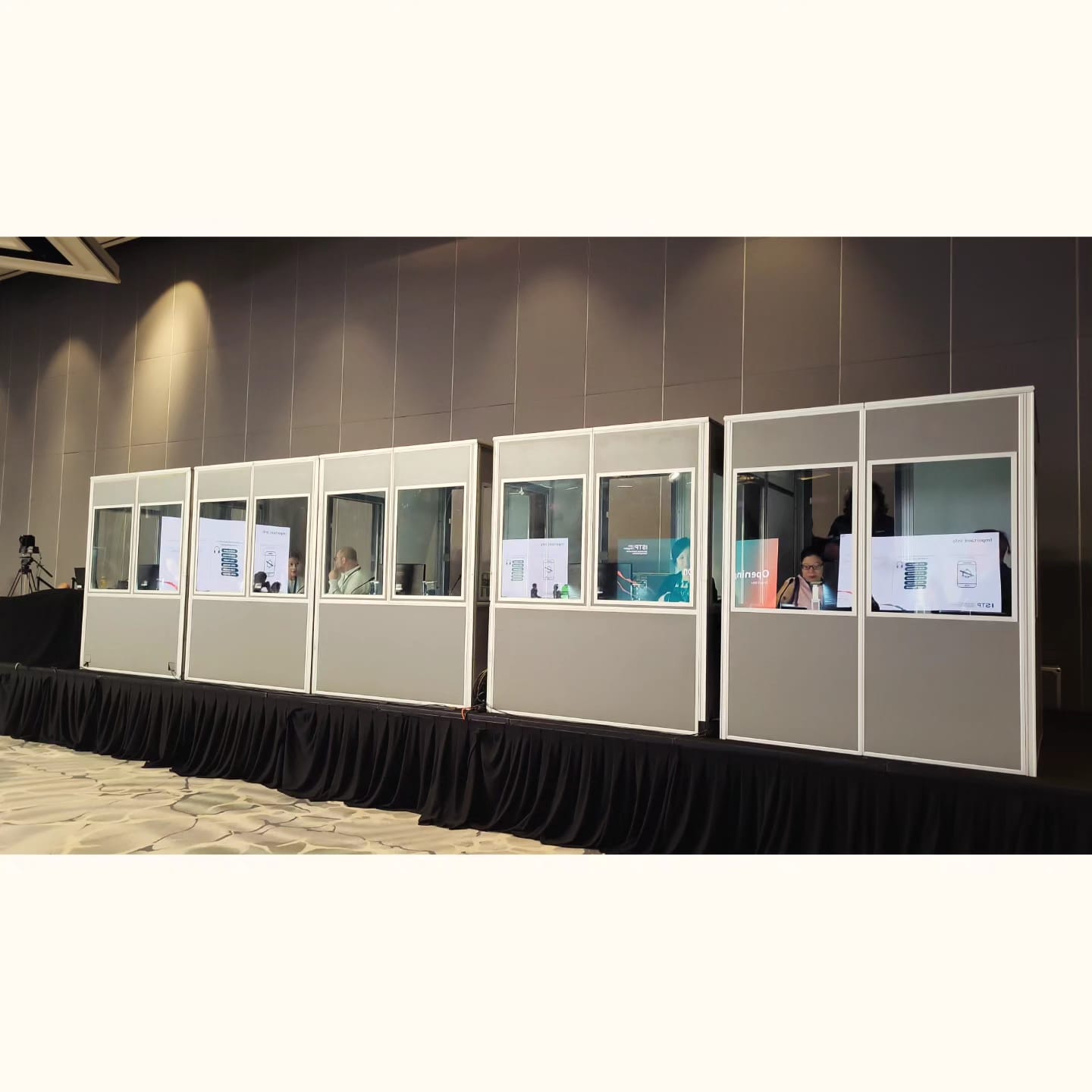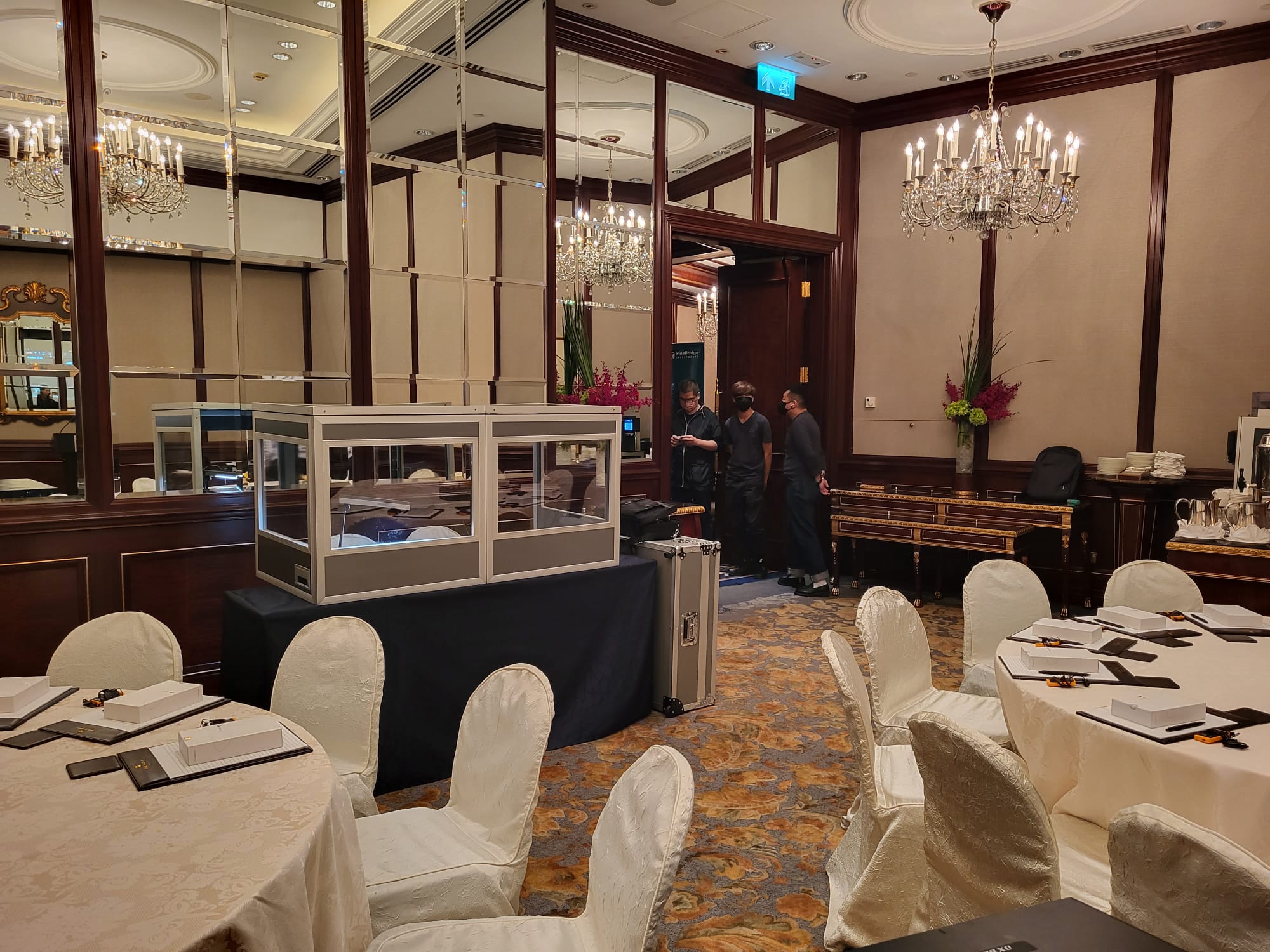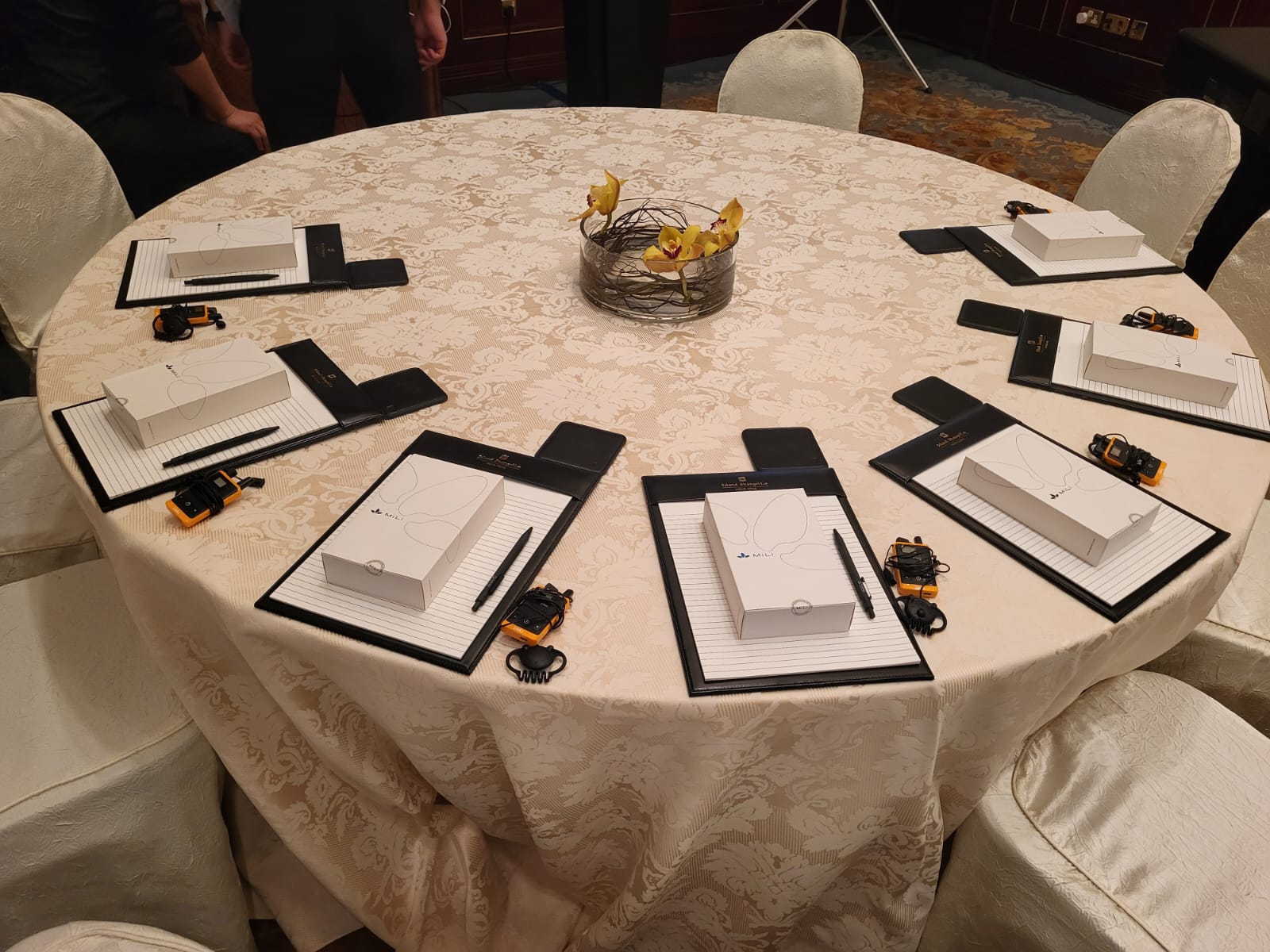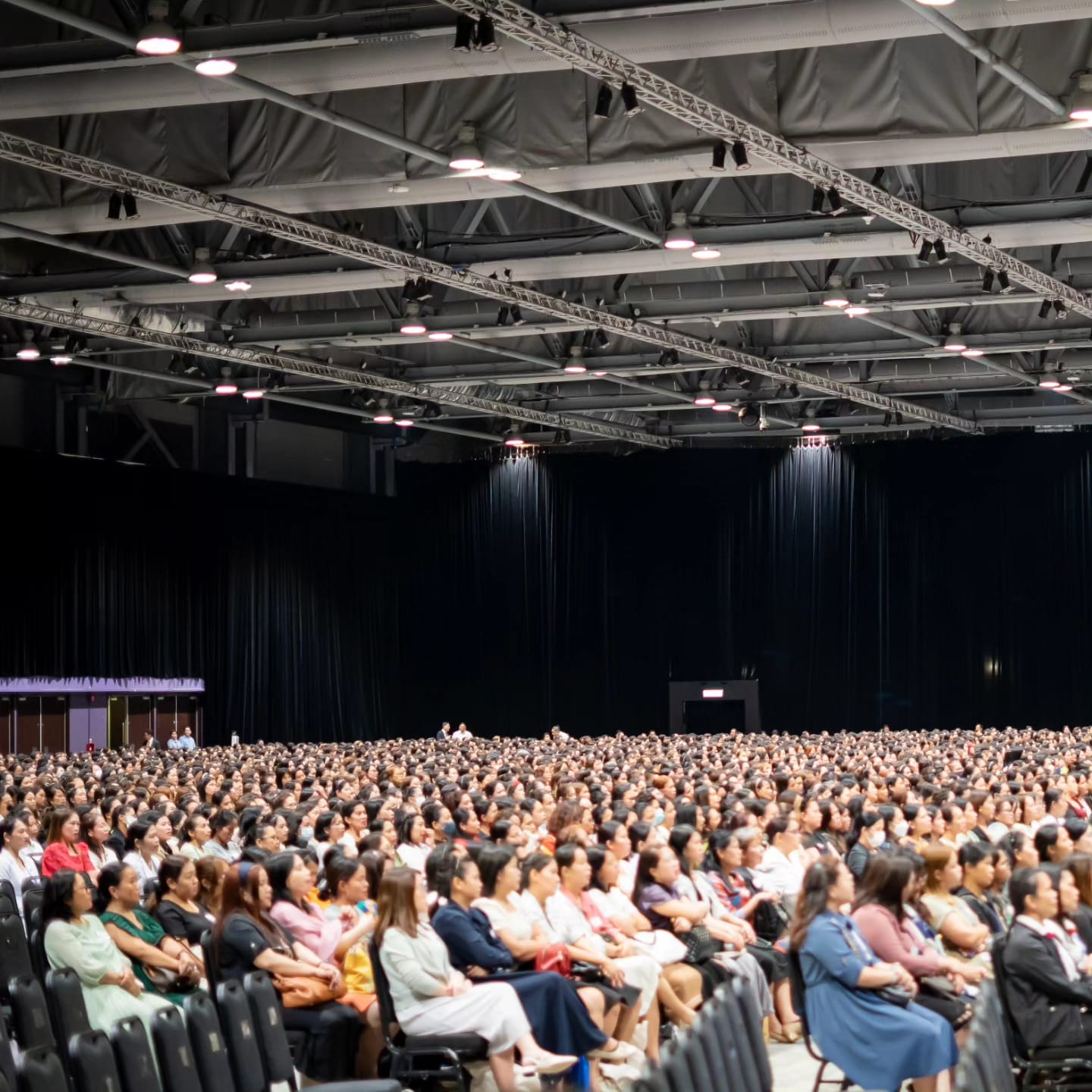

 |
|
|
What is Simultaneous Interpretation and how does it work?
Simultaneous interpreting is a mode of interpreting in which the speaker makes a speech and the interpreter reformulates the speech into a language his audience understands at the same time (or simultaneously).It is when an interpreter translates the message from the source language to the target language in real-time. |
Simultaneous interpretation usually takes place in multi-national conferences, seminars, symposiums, conventions, round table gala dinners etc.

We can support up to 40 languages and dialects in HK Interpreters.
Simultaneous interpretation requires that three efforts occur at the same time: listening in one language, processing the message, and then reproducing it in another language*. These three efforts happen at the same time, repeatedly, demanding an exhausting level of concentration. Some interpreters manage to work perfectly for 15 minutes, then begin to have difficulty understanding the speaker, indicating that one of the three efforts is suffering more than the other. Others hold up to 30 minutes. However, there are no superheroes here: the speaker's message will not be interpreted correctly for long by an interpreter alone doing simultaneous interpretation.
It is all about the quality of the performance of the interpretation. We have a handful of interpreters who can work solo all day but please note this will cause fatigue of the interpreters and result in less quality interpretation, so the organizer have to take this into account.

Yes, we can provide whispered interpreters to whisper the interpretation into delegate ears, but please note this will not be the perfect solution when it comes to noisy environment and the interpreters will have to put extra effort concentrating the speaker without the aid of the SI equipment.


a detailed explanation of Simultaneous Interpretation according to AIIC.
According to the International Association of Conference Interpreters (AIIC), simultaneous interpretation is a mode of interpretation where the interpreter, working in a sound-proof booth, listens to a speaker in one language (the source language) and almost simultaneously renders the message into another language (the target language) for the audience through a microphone and headsets.
The key characteristic is the near-simultaneous nature of the task: the interpreter speaks while the original speech is still ongoing, maintaining a lag (called décalage) of just a few seconds.
AIIC, as the global professional body for conference interpreters, sets the standards for the profession. Their definition encompasses not just the act itself but the entire professional context:
1. The Technical Setup:
Booths: Interpretation must be performed from a sound-proof booth that meets the ISO standards (ISO 4043) to allow the interpreter to hear the original speaker clearly without being disturbed by their own output or room noise.
Equipment: It requires a complex system of microphones, transmitter consoles, and receiver headsets. AIIC has strict guidelines on the quality and functionality of this equipment to ensure clarity and prevent technical failures that could jeopardize the communication.
Teamwork: For any meeting longer than 1.5-2 hours, simultaneous interpretation requires a team of at least two interpreters per language working in rotation (typically 20-30 minutes on, 20-30 minutes off). This is a crucial AIIC standard to maintain the high level of concentration required and prevent fatigue-induced errors.
2. The Cognitive Process:
AIIC emphasizes that simultaneous interpretation is an extremely demanding cognitive activity. It is not mere word-for-word translation. The interpreter must perform several tasks at once:
Listen and Analyze: Understand the full meaning, nuance, and intent of the source speech.
Short-Term Memory: Hold segments of the speech in memory while processing the next segment.
Transpose and Reformulate: Convert the message conceptually into the target language, accounting for cultural differences, jargon, and style.
Speak: Deliver the reformulated message clearly and coherently.
3. The Professional Standards:
For AIIC, simultaneous interpretation is a profession defined by strict ethical and professional codes:
Confidentiality: Interpreters are bound by a strict code of confidentiality concerning anything they hear during their assignment.
Impartiality: The interpreter must remain neutral and never alter the message based on personal opinion.
Preparedness: Professional interpreters rigorously prepare for assignments, studying relevant documents, glossaries, and background information on the subject matter.
Competence: AIIC members are required to have a perfect command of their working languages and to only accept assignments for which they possess the necessary subject-matter expertise.
AIIC clearly distinguishes simultaneous interpretation from other forms:
Vs. Consecutive Interpretation: In consecutive mode, the interpreter takes notes while the speaker talks (for a period of several minutes) and then renders the speech in the target language once the speaker has paused. It does not require a booth and is used for smaller meetings, speeches, or court settings.
Vs. Whispered Interpretation (Chuchotage): This is a form of simultaneous interpretation where the interpreter whispers the translation directly to one or two listeners without using equipment. It is used when only a few people need interpretation and is physically taxing for the interpreter.
Vs. Machine Translation/AI Interpretation: AIIC stresses that professional human interpretation involves understanding meaning, context, emotion, and cultural nuance in a way that machines currently cannot reliably replicate, especially in high-stakes environments like international diplomacy, legal proceedings, or technical negotiations.
AIIC's standards are the gold standard for the industry. When a client hires an AIIC interpreter for simultaneous interpretation, they are guaranteed:
A highly trained professional.
A working environment (booth, equipment) that meets international safety and acoustic standards.
A team large enough to ensure accuracy throughout the event.
Adherence to a strict code of ethics.
In summary, according to AIIC, simultaneous interpretation is a highly skilled profession that involves converting speech from one language to another in real-time, performed by trained experts working in teams with specialized equipment, and governed by a strict set of professional and ethical standards. It is the backbone of multilingual international communication at organizations like the UN, EU, and countless global conferences.
According to the United Nations, simultaneous interpretation is the mode of interpretation that is essential for the real-time, multilingual conduct of its meetings and diplomacy. It is a complex, highly structured process that enables delegates from all over the world to communicate seamlessly in their own languages.
Here are the key aspects of simultaneous interpretation as defined and practiced by the UN:
At the UN, simultaneous interpretation means that interpreters listen to a speaker in one language (the source language) and instantly reformulate the message into another language (the target language), with only a few seconds' delay. This allows delegates wearing headsets to follow the proceedings in their preferred official language as they happen.
The UN's entire interpretation system is built around its six official languages:
Arabic
Chinese
English
French
Russian
Spanish
All formal meetings and official documents must be available in these languages. The goal of interpretation is to ensure complete linguistic equality, meaning a delegate speaking any official language must be understood by all others, and have access to all discussions in their own language.
The UN interpretation service is renowned for its technical standards. Interpreters work in soundproof booths overlooking the meeting room (such as the General Assembly Hall or Security Council Chamber). Each booth is equipped with:
A console with microphones, volume controls, and a channel selector to listen to the original speaker or other interpreters.
A direct audio feed from the podium and microphones in the room.
A microphone for the interpreter's output.
Delegates in the room have headsets where they can select the channel corresponding to any of the six official languages.
The process is highly organized and relies on teamwork:
Teams: Interpreters always work in teams of two or three per language booth for any given meeting. This is due to the intense mental concentration required; they typically rotate every 20-30 minutes.
Relay System: If a delegate speaks a language for which there is no direct interpreter in a particular booth (e.g., a Chinese speaker and the Spanish booth), the UN uses a "relay" system. The Spanish interpreters will listen to the English or French interpretation of the Chinese speech (provided by the Chinese-to-English/French interpreter) and then interpret that into Spanish. This system ensures coverage for all language combinations.
Preparation: UN interpreters receive extensive documentation beforehand (speeches, reports, agendas) to prepare and research highly technical or specific terminology.
The UN sets an exceptionally high bar for its interpreters. According to their hiring standards and practice, a UN simultaneous interpreter must:
Have Perfect Command of Languages: Their "active" languages (into which they interpret) must be at a native level, and their "passive" languages (from which they interpret) must be mastered with a deep understanding of nuances, accents, and cultural contexts.
Possess a Wide General Knowledge: They must understand a vast range of topics, from international law and finance to climate science and public health.
Maintain Impartiality and Confidentiality: Interpreters must never let their personal opinions influence their work and must keep all meeting discussions confidential.
Demonstrate Extreme Resilience and Concentration: They must perform under pressure, often dealing with fast-speaking delegates, heavy accents, complex subject matter, and the high stakes of international diplomacy.
While simultaneous is the standard for most large meetings, the UN also uses:
Consecutive Interpretation: Used more in smaller, informal meetings, press briefings, or tours. The speaker pauses to allow the interpreter to render the message.
Whispering (Chuchotage): Similar to simultaneous, but without a booth. The interpreter sits behind or next to a small number of delegates and whispers the interpretation directly to them.